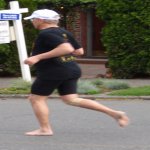Overpronation of the ankle during gait could place extra stress on the knee joint and contribute to chronic pain.
A new study examined 54 recreational runners to determine if any difference was visible in joint mechanics during gait. Those who suffered from chronic knee pain exhibited greater rearfoot eversion compared to the healthy controls. The increased rearfoot eversion was coupled with greater peak femur adduction, which could be placing extra load on the knee joint.
Conclusions
Many have debated whether overpronation can lead to ankle or knee dysfunction. This study shows that by increasing adduction at the femur, altered subtalar mechanics can unfavorably affect the knee joint and may be a major risk factor for injury or pain. Therapists working with knee pain patients should assess for the influence that the subtalar joint may be playing in movement dysfunction.
References
